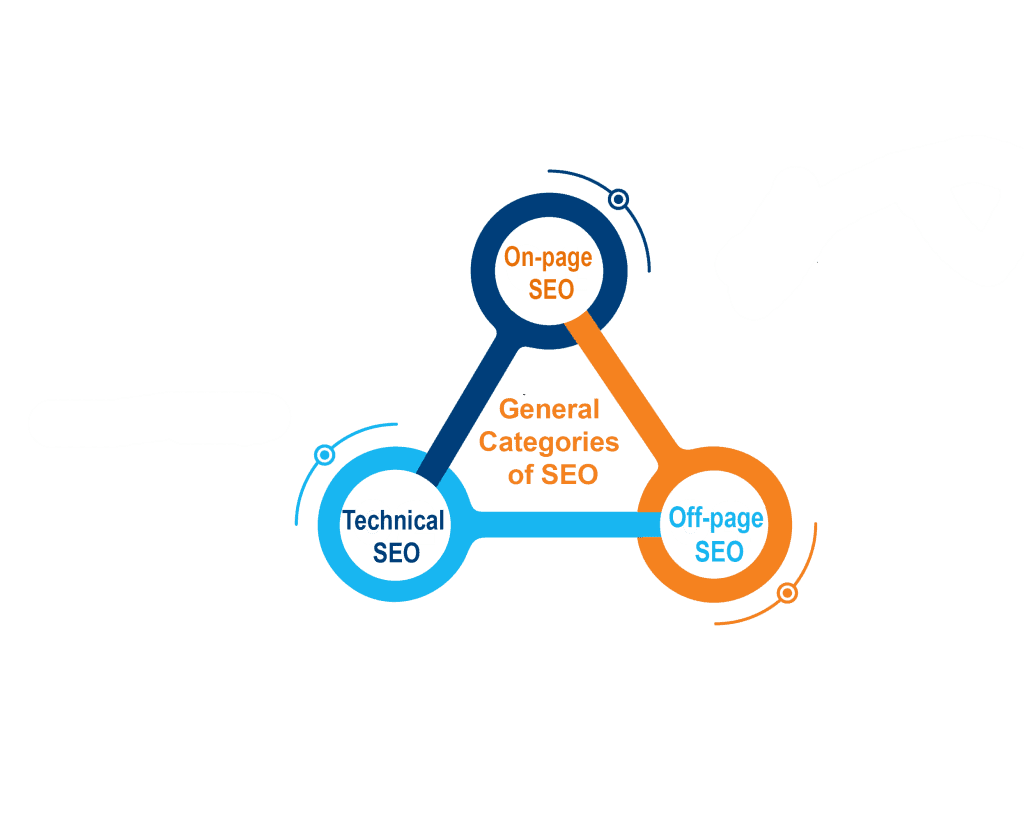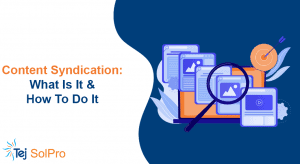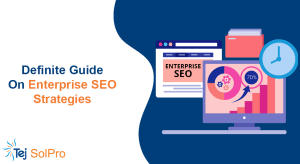In today’s dynamic business environment, a strong online presence is no longer just an advantage, it’s a fundamental requirement for B2B organizations aiming for sustained growth and a competitive edge.
Search engine optimization (SEO) has emerged as a cornerstone of this online presence, playing a pivotal role in attracting high-quality leads, fostering meaningful business relationships, and ultimately driving significant revenue for B2B companies.
Unlike businesses that primarily cater to individual consumers (B2C), B2B organizations operate within a unique landscape characterized by intricate purchasing processes, multiple stakeholders involved in decision-making, extended evaluation periods, and a focus on long-term value creation rather than immediate transactions.
Organic search has become an indispensable channel for B2B customer acquisition. When businesses seek solutions, information, or strategic partners, their journey often begins with a query on a search engine.
A well-crafted B2B SEO strategy ensures that a company’s website achieves prominent visibility in these crucial search results. This visibility positions the B2B firm as a credible authority and a potential solution provider precisely when prospects are actively seeking their expertise.
By connecting with businesses that are already in the market for their offerings, B2B SEO leads to more qualified leads and a higher likelihood of conversion into valuable, long-term clients.
This comprehensive guide delves into the essential elements of developing and implementing a winning B2B SEO strategy, providing actionable insights and a clear roadmap for achieving sustained success in the ever-evolving digital landscape.
Contents
- 1 What is B2B SEO?
- 2 Differentiating B2B SEO from B2C SEO
- 3 The Core Pillars of SEO: On-Page, Off-Page, and Technical SEO Explained
- 4 A Step-by-Step Guide to an Effective B2B SEO Strategy
- 4.1 Audience Understanding and Funnel Mapping
- 4.2 Keyword Research
- 4.2.1 Focusing on Intent and Value Over Search Volume
- 4.2.2 Identifying Core Seed Keywords and Expanding Your Reach
- 4.2.3 Strategically Analyzing Competitor Keywords to Find Gaps
- 4.2.4 Targeting Keywords Based on Each Stage of the B2B Sales Funnel
- 4.2.5 Leveraging Google Search Console for Actionable Keyword Insights
- 4.2.6 The Power of the Tree Ring Keyword Strategy for Broader Reach
- 4.2.7 Unearthing Low-Volume, High-Value Keywords and Questions
- 4.3 Crafting High-Value Content and Optimizing Key Pages
- 4.3.1 Tailoring Content Directly to Your Buyer Personas’ Needs and Pain Points
- 4.3.2 Creating Diverse Content Formats Optimized for Each Funnel Stage
- 4.3.3 The Strategic Advantage of Long-Form, In-Depth Content for B2B
- 4.3.4 Optimizing Product and Service Pages for B2B Conversions
- 4.3.5 Building a Scalable and Consistent B2B Content Strategy
- 4.3.6 Ensuring Content Originality and Avoiding Duplicate Content Pitfalls
- 4.3.7 Adopting a “Business Casual” Writing Style for Enhanced Engagement
- 4.4 Technical SEO
- 4.5 Off-Page SEO
- 5 Leveraging B2B SEO for Effective Lead Generation
- 6 Measuring and Analyzing B2B SEO Success: Key Metrics and Tools
- 7 Future-Proofing Your B2B SEO Strategy in an Evolving Digital World
- 8 Conclusion
What is B2B SEO?

At its core, B2B SEO is a specialized digital marketing strategy meticulously designed to improve the ranking of a B2B website’s pages within the search engine results pages (SERPs).
The primary objective is to attract high-quality, relevant traffic from businesses that are actively searching for the specific products, services, or industry expertise offered by the B2B organization.
This targeted approach acknowledges the unique characteristics of the B2B market, recognizing that the intended audience consists of professionals and organizations with distinct needs and well-defined decision-making frameworks.
Achieving meaningful and sustainable results in B2B SEO requires a long-term perspective, consistent effort, and effective collaboration across various teams within the company. Measurable outcomes from a well-executed B2B SEO strategy typically begin to materialize over a period of 6 to 12 months.
Differentiating B2B SEO from B2C SEO
While both B2B and B2C SEO share the fundamental goal of improving search engine rankings and driving organic traffic to a website, several key differences necessitate the development of tailored strategies for each approach. Understanding these distinctions is crucial for B2B businesses to effectively target their ideal customers and achieve their marketing objectives.
| Feature | B2B SEO | B2C SEO |
| Target Audience | Businesses and professionals, often involving a collective decision-making unit comprising managers, executives, and other stakeholders. | Individual consumers making purchasing decisions for personal use. |
| Keyword Focus | Lower search volumes but higher commercial value, industry-specific terminology, and long-tail keywords that reflect specific business needs and challenges. | Higher search volumes with broader keywords related to general consumer interests, needs, and desires. |
| Sales Cycle | Typically longer and more complex, often involving multiple stages of research, evaluation, negotiation, and approval from various stakeholders within the organization. | Often shorter and more transactional, driven by immediate needs, desires, or impulse purchases. |
| Content Goals | Focus on establishing thought leadership within the industry, providing in-depth, authoritative, and educational information, and offering practical solutions to specific business challenges. | Can be more product-focused, promotional, and geared towards immediate conversions or brand awareness. |
| Conversion Metrics | Primarily measured by lead generation (e.g., form submissions, demo requests, quote inquiries), qualified opportunities identified by the sales team, and ultimately, high-value deals and long-term contracts. | Often measured by direct sales, e-commerce transactions, website sign-ups, and immediate purchases. |
| Brand Recognition | Building strong brand leadership and recognition as a trusted authority and reliable partner within the industry is paramount for long-term success. | While important, immediate brand recognition may not be as critical as driving immediate sales or capturing a broad consumer market. |
These fundamental differences underscore the critical importance of adopting a nuanced and specifically tailored approach to B2B SEO. Strategies that have proven successful in the B2C realm are unlikely to yield the same positive results when applied to the complexities and specific demands of the B2B market.
A thorough understanding of these key distinctions is the essential first step in formulating a successful and impactful B2B SEO strategy.
The Core Pillars of SEO: On-Page, Off-Page, and Technical SEO Explained

Before diving into the specific steps of building a B2B SEO strategy, it’s helpful to understand the general categories that SEO activities fall into. These are broadly categorized as On-Page SEO, Off-Page SEO, and Technical SEO.
On-Page SEO
This focuses on optimizing the actual content and structure of your website’s pages. Key elements include ensuring a positive user experience, strategically incorporating relevant keywords into your content, crafting compelling page titles and meta descriptions, and structuring your content with clear headings. The goal is to make each page highly relevant and valuable to both users and search engines for its target topic.
Off-Page SEO
This encompasses all activities performed outside of your own website to improve its ranking and authority. The most significant component of off-page SEO is link building acquiring high-quality backlinks from other reputable websites. Other off-page signals include brand mentions, social media engagement, and online reviews.
Technical SEO
This ensures that your website is technically sound and easily accessible for search engine crawlers to find, understand, and index your content. Key aspects include website speed, mobile-friendliness, a clear site structure, proper use of schema markup, ensuring your site is secure (HTTPS), and managing elements like XML sitemaps and robots.txt files.
A comprehensive B2B SEO strategy will address all three pillars to achieve optimal results.
A Step-by-Step Guide to an Effective B2B SEO Strategy
Now, let’s delve into the actionable steps to create and implement a powerful B2B SEO strategy that drives results.
Audience Understanding and Funnel Mapping
Before you can effectively target keywords or create content, you must deeply understand who you’re trying to reach and how they make purchasing decisions.
Creating Detailed Buyer Personas for Each Decision Maker
A cornerstone of any effective B2B SEO strategy is a deep and comprehensive understanding of the individuals involved in the purchasing decisions within your target businesses. This requires going beyond basic demographic information to create detailed buyer personas that represent your ideal customers.
These personas should encapsulate crucial details about these individuals, including their specific roles and responsibilities within their organizations, their primary pain points and business challenges, their professional goals and aspirations, their preferred sources of information for research and decision-making, and the specific language and terminology they use when searching for solutions. In the B2B context, it is particularly important to recognize and understand the dynamics of the decision-making unit (DMU) within your target companies.
Often, multiple individuals with varying roles, responsibilities, and perspectives are involved in the evaluation and approval process for a purchase. Therefore, your buyer persona development should account for these different stakeholders and their unique information needs and motivations.
To gain truly authentic and valuable insights into your target audience, conducting direct customer interviews can prove invaluable.
Mapping the Complex B2B Buyer Journey
Complementing the development of detailed buyer personas is the critical process of mapping the B2B buyer journey. This involves outlining the typical stages that a business prospect progresses through, from the initial awareness of a need or problem to the final decision and purchase of a solution.
Common stages in the B2B buying process often include awareness, consideration, and decision. SEO plays a vital role at each of these stages by targeting different types of keywords and delivering relevant content that aligns with the user’s specific intent at that particular point in their journey.
Aligning SEO Efforts with Your Sales Funnel and CRM Insights
To maximize the impact and effectiveness of your B2B SEO strategy, it is crucial to foster a strong and seamless alignment between your SEO efforts and your overall sales funnel.
Furthermore, strategically leveraging the valuable insights gleaned from your Customer Relationship Management (CRM) system can significantly enhance the precision and impact of your SEO initiatives.
Data collected by your sales team through their direct interactions with prospects, as well as the rich information captured within your CRM, can provide invaluable context regarding the specific questions, key pain points, and the precise language used by your potential clients.
This firsthand information can then be directly incorporated into your keyword research and content creation processes.
Keyword Research
With a clear understanding of your audience, the next step is to identify the search terms they use.
Focusing on Intent and Value Over Search Volume
In the specialized realm of B2B SEO, the primary emphasis in keyword research often shifts from solely focusing on keywords with high search volume to prioritizing keywords that demonstrate strong commercial intent and align precisely with the specific needs and challenges of your target audience.
While search volume remains a consideration, B2B keywords frequently exhibit lower monthly search volumes compared to their B2C counterparts but often attract a highly qualified audience.
Identifying Core Seed Keywords and Expanding Your Reach
The process of effective B2B keyword research typically begins with identifying a foundational set of core “seed keywords” that are directly related to your company’s core products, primary services, and overall industry.
To effectively expand this initial list, various proven techniques and readily available tools can be strategically employed, including Google Autocomplete and brainstorming with employees.
Strategically Analyzing Competitor Keywords to Find Gaps
A crucial element involves strategically analyzing the keywords that your primary competitors are currently ranking successfully for.
Tools like Ahrefs or SEMrush can help identify these keywords. However, instead of simply replicating a competitor’s strategy, focus on identifying potential gaps in their targeting and uncovering unique opportunities.
Targeting Keywords Based on Each Stage of the B2B Sales Funnel
A sophisticated B2B keyword strategy recognizes that prospects at different stages of the sales funnel will utilize different types of search queries. It is essential to map your keyword targeting efforts to these various stages:
- Top of the Funnel (TOFU) Keywords / Uncovering Top of the Funnel Topics: These keywords are typically informational in nature and relate to broad industry problems or challenges. Targeting these helps attract a wider audience in the early stages of their research, who may not yet be aware of your specific solutions but are seeking to understand their problems. Examples might include “what is supply chain management?” or “best practices for cloud security implementation?”
- Middle of the Funnel (MOFU) Keywords: Keywords at this stage indicate that the user is actively seeking specific types of solutions or exploring particular categories of products or services. Examples could be “supply chain management software comparison.”
- Bottom of the Funnel (BOFU) Keywords: These are high-intent keywords used by prospects who are nearing a final purchase decision, often including specific product names, brand names, or comparative terms.
Leveraging Google Search Console for Actionable Keyword Insights
Google Search Console provides a valuable resource for gaining a deeper understanding of the actual keywords your website is already ranking for. Analyzing these queries can identify existing strengths and opportunities for further optimization.
The Power of the Tree Ring Keyword Strategy for Broader Reach
The “Tree Ring Keyword Strategy” involves identifying a central “core keyword” and then branching out to related “shoulder topics” and even more tangential areas of interest to the target audience. This can help establish your company as a thought leader and attract a more diverse range of potential customers.
Unearthing Low-Volume, High-Value Keywords and Questions
Do not overlook the value of low-volume, highly specific keywords and the exact questions your potential clients might be asking. These niche keywords often indicate a very specific need or strong purchase intent.
Crafting High-Value Content and Optimizing Key Pages
Once you have your keywords, the focus shifts to creating and optimizing content that addresses user intent and search engine requirements.
Tailoring Content Directly to Your Buyer Personas’ Needs and Pain Points
Every single piece of content you produce should be strategically crafted with a specific persona in mind, directly addressing their unique pain points, specific challenges, pressing questions, and particular information needs.
Creating Diverse Content Formats Optimized for Each Funnel Stage
Different content formats appeal to users at various stages of their B2B buyer journey.
- Top of the Funnel: Informative blog posts, white papers, checklists, infographics.
- Middle of the Funnel: Case studies, webinars, e-books, comparison guides.
- Bottom of the Funnel: Product demos, free trials, consultations, detailed product/service pages.
The Strategic Advantage of Long-Form, In-Depth Content for B2B
Creating long-form, in-depth content (often exceeding 000 words) is a powerful strategy in B2B SEO. Comprehensive content, like “Ultimate Guides” that cover a topic extensively on a single page , helps establish authority and tends to rank higher.
Optimizing Product and Service Pages for B2B Conversions
Your product and service pages are critical touchpoints. Ensure they feature unique, compelling content that clearly articulates the value proposition. Strategically use relevant keywords in page titles, URLs, meta descriptions, and throughout the body content. Include clear calls to action aligned with B2B conversion goals.
Building a Scalable and Consistent B2B Content Strategy
A successful B2B SEO strategy necessitates a consistent approach to content creation, often centered around a valuable B2B blog. Developing a content calendar helps ensure a regular flow of new content.
Focusing on creating pillar content and associated topic clusters (related to “Shoulder Topics”) helps organize website content and improve search visibility.
Ensuring Content Originality and Avoiding Duplicate Content Pitfalls
Maintaining absolute originality across all website content is paramount. Search engines penalize websites with duplicate content.
Adopting a “Business Casual” Writing Style for Enhanced Engagement
While maintaining professionalism, a “business casual” writing style can make your content more approachable and engaging for business professionals.
Technical SEO
A robust B2B SEO strategy is built upon a solid technical foundation.
A Step-by-Step Checklist For Technical SEO Audit
A technical SEO audit is essential to identify and address underlying issues. This includes:
- Crawl Errors and Redirects
- Optimized XML Sitemap and Robots.txt
- Proper Implementation of Analytics Tracking
- Ensuring HTTPS Implementation (SSL)
- Optimizing Core Web Vitals
- Implementing Effective Internal Linking Strategies
- Performing a Toxic Backlink Audit
- Review and Optimization of Content Metadata
- Improving Overall Site Speed and Performance
- Implementing URL Canonicalization Best Practices
- Ensuring Complete Mobile-Friendliness (AMP can be a part of this)
Implementing Schema Markup for Enhanced Search Visibility and Rich Snippets
Schema markup helps search engines understand your content better, potentially leading to rich snippets in search results. High-impact schema types for B2B include Product, Service, FAQ, and Organization schema.
Optimizing Site Structure for Improved User Experience and Crawlability
A well-defined and logical site structure is essential for both users and search engines.
Prioritizing Technical Fixes That Will Drive the Most Impact
Focus on critical technical factors that have the most significant impact on search performance.
Off-Page SEO
Off-page factors, particularly backlinks, are crucial for B2B SEO success.
Why Backlinks Remain a Critical Ranking Factor in B2B SEO
High-quality backlinks from authoritative and relevant websites signal to search engines that your website is a credible resource.
Strategic Link Building Tactics for B2B Businesses
- Digital PR and Media Outreach: Actively engaging with industry blogs, news websites, and online publications to secure mentions and links.
- Guest Blogging on Relevant Industry Publications: Contributing valuable articles to reputable industry publications.
- Capitalizing on Partner Pages and Strategic Alliances: Leveraging relationships with manufacturers, suppliers, and partners for linking opportunities.
- Creating Valuable and Shareable Tools and Calculators: Developing free resources that naturally attract links.
- Nurturing Relationships with Industry Influencers: Cultivating relationships that can lead to organic link opportunities.
Focusing on the Quality and Relevance of Backlinks Over Quantity
A few high-quality, relevant backlinks are more valuable than numerous low-quality links.
Building a Brand Presence That Naturally Attracts High-Quality Links
Establishing your company as a thought leader naturally attracts attention and links.
Leveraging B2B SEO for Effective Lead Generation
While a comprehensive B2B SEO strategy aims to improve overall visibility and authority, a key objective for most B2B organizations is to generate high-quality leads. Here’s how to specifically tailor your B2B SEO efforts for maximum lead generation impact, drawing on insights focused on this goal:
Strategic Keyword Research for Lead Generation
The foundation of generating leads through SEO starts with targeting the right keywords with the right intent.
Understanding Keyword Intent
Before diving into keyword research, it’s crucial to understand the “intention” behind a search query. For example, someone searching “SEO tips” likely has informational intent, whereas a search for “B2B SEO services pricing” indicates a stronger commercial and lead-generation intent. Focusing on keywords that signal a user is looking for solutions or is ready to engage with a vendor is key.
Keyword Prioritization for Leads
Once you have a list of potential keywords, prioritize them based on their likelihood to convert into leads. While search volume is a factor, also consider:
- Commercial Intent: As mentioned, keywords that suggest a user is further down the sales funnel are more valuable for lead generation.
- Difficulty vs. Opportunity: Highly competitive, high-volume keywords might be hard to rank for quickly. Look for less competitive, long-tail keywords that have strong intent; these can be goldmines for qualified leads.
Methods for Finding Lead-Focused Keywords
- Utilize online tools, including professional platforms like SEMrush and Ahrefs, to identify keywords your target audience uses when looking for solutions like yours.
- Brainstorm with your sales and customer service teams to understand the exact language and questions prospects use.
- Monitor relevant forums and discussion boards to see how potential customers describe their problems and the solutions they seek.
Content Creation and Optimization for Lead Capture
High-quality content is essential, but for lead generation, it needs to be strategically designed to capture prospect information.
Creating High-Quality, Unique, and Authoritative Content
To attract and convert leads, your content must stand out. This means:
- Incorporating opinions and quotes from industry experts to build credibility.
- Using accurate data and relevant information to showcase expertise.
- Conducting interviews with well-known industry figures can add significant value and draw in prospects.
- Ensuring impeccable spelling and grammar is crucial for maintaining professionalism and trust.
Content Updation for Lead Generation
Don’t let your existing high-traffic content go to waste. Convert those visitors into leads by:
- Offering popular blog posts or guides as downloadable resources (e.g., checklists, whitepapers, detailed specifications) in exchange for an email address. This is a direct way to capture lead information.
- Building relationships with readers by encouraging subscriptions to email lists for more exclusive content or updates.
- The primary goal here is to collect visitors’ email addresses to initiate and nurture a relationship.
Aligning with Account-Based Marketing (ABM) for High-Value Leads
As Account-Based Marketing (ABM) gains traction, your SEO and content strategy should adapt to support these targeted efforts.
Targeting High-Value Accounts
ABM focuses on smaller groups of high-value accounts. Your SEO keyword strategy can support this by targeting niche, industry-specific keywords relevant to these key accounts.
Personalized Content Assets
Create highly personalized content assets that address the specific needs and pain points of your target accounts. While broader SEO brings in traffic, content tailored for ABM helps convert those specific high-value leads.
Lead Nurturing Considerations
Once a lead is captured through your SEO efforts, the journey doesn’t end.
Nurturing with Targeted Campaigns
Use the email addresses collected to nurture leads through targeted email campaigns. These campaigns should aim to educate and engage prospects further, guiding them through the sales funnel before a direct sales approach.
Alternative Lead Capture (Chatbots & Analytics)
Some companies are experimenting with removing traditional lead forms and making content freely accessible. They then use tools like chatbots and advanced analytics to identify highly engaged readers and proactively convert them into leads. This approach relies on strong content that naturally qualifies prospects.
By specifically focusing these aspects of your SEO strategy on lead generation, you can transform your website into a more powerful engine for acquiring qualified B2B prospects.
Measuring and Analyzing B2B SEO Success: Key Metrics and Tools
To effectively track progress and measure success, it’s essential to identify and monitor relevant Key Performance Indicators (KPIs).
Identifying the Most Important Key Performance Indicators (KPIs) for B2B SEO
Key KPIs for B2B SEO include:
- Organic Traffic Growth and Trends
- Keyword Rankings for Target Terms
- Lead Generation from Organic Search Traffic (especially important when focusing on leads)
- Conversion Rates of Organic Search Visitors (e.g., form fills, demo requests)
- Domain Authority/Domain Rating and Backlink Profile Growth
- Tracking Brand Mentions and Online Visibility
Leveraging Powerful Analytics Tools for Data-Driven Insights
Tools like Google Analytics, Google Search Console, Ahrefs, and SEMrush are invaluable for tracking KPIs and gaining insights.
Setting Realistic Benchmarks and Diligently Tracking Progress Over Time
Establish baseline metrics before implementing SEO changes to accurately measure impact.
The Importance of Continuous Monitoring, Testing, and Data-Driven Refinement
SEO is an ongoing process requiring continuous monitoring, testing, and refinement based on performance data.
Future-Proofing Your B2B SEO Strategy in an Evolving Digital World
The digital landscape is constantly changing, requiring strategies to adapt.
Understanding the Growing Impact of AI on Search and B2B SEO
The rise of AI-powered search results and generative engine optimization (GEO) requires businesses to adapt by creating AI-friendly content.
The Continued and Increasing Importance of E-E-A-T in B2B
Google’s emphasis on E-E-A-T (Experience, Expertise, Authoritativeness, Trustworthiness) remains critical, especially for B2B websites where expertise and authority are crucial for building trust. This is relevant for “Your Money or Your Life” (YMYL) topics, which can apply to B2B industries with significant financial implications.
Adapting to Ongoing Algorithm Updates and Emerging Search Trends
Staying informed about algorithm updates and new search trends is essential for maintaining and improving rankings.
Conclusion
In conclusion, a well-defined, meticulously planned, and consistently executed B2B SEO strategy is no longer just a desirable marketing tactic but rather an indispensable asset for any business-to-business organization seeking to not only survive but truly thrive in today’s increasingly competitive digital world.
When your business is seen as a valuable resource, it is more likely to convert visitors into leads.






